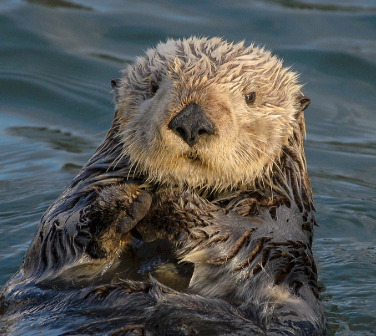
| TOEFL ライティング Integrated パッセージ・レクチャー 関連付け
Integrated Writingの問題は、「レクチャーの内容を要約することと、それがどのように
リーディングの内容と関連しているかを述べること」です。
あくまでもレクチャーで主張されていたポイントを中心にエッセイを展開することが重要です。
そしてそれらがどのようにリーディング(パッセージ)と矛盾するかを
示すことができれば、問題が要求している点について明確に答えることができ高評価となります。
それでは、実際の解答例の中でどのようにレクチャーの要点とリーディングの要点からエッセイを構成しているかを色分けして検証してみます。
レクチャー及びリーディングの要点を引用する際は、そのまま写すのではなく、パラフレーズすることも高評価につながりますので、注意して解答例をご覧ください。
| リーディング (パッセージ)
(青) : 解答例の構成に使われている要点。
The sea otter is a small mammal that lives in waters along the western coast of North America from California to Alaska. When some sea otter populations off the Alaskan coast started rapidly declining a few years ago, it caused much concern because sea otters play an important ecological role in the coastal ecosystem. Experts started investigating the cause of the decline and quickly realized that there were two possible explanations: environmental pollution or attacks by predators. Initially, the pollution hypothesis seemed the more likely of the two.
The first reason why pollution seemed the more likely cause was that there were known sources of it along the Alaskan coast, such as oil rigs and other sources of industrial chemical pollution. Water samples from the area revealed increased levels of chemicals that could decrease the otters’ resistance to life threatening infections and thus could indirectly cause their deaths.
Second, other sea mammals such as seals and sea lions along the Alaskan coast were also declining, indicating that whatever had endangered the otters was affecting other sea mammals as well. This fact again pointed to environmental pollution, since it usually affects the entire ecosystem rather than a single species. Only widely occurring predators, such as the orca (a large predatory whale), could have the same effect, but orcas prefer to hunt much larger prey, such as other whales.
Third, scientists believed that the pollution hypothesis could also explain the uneven pattern of otter decline: at some Alaskan locations the otter populations declined greatly, while at others they remained stable. Some experts explained these observations by suggesting that ocean currents or other environmental factors may have created uneven concentrations of pollutants along the coast.

| リスニング レクチャー
レクチャー (スクリプト)
(赤) : 解答例の構成に使われている要点。
Well, ongoing investigations have revealed that predation is the most likely cause of sea otter decline after all.
First, the pollution theory is weakened by the fact no one can really find any dead sea otters washing up on Alaskan beaches. That’s not what you would expect if infections caused by pollution started killing a lot of otters. On the other hand, the fact that it’s so hard to find dead otters is consistent with the predator hypothesis: if an otter is killed by a predator, it’s eaten immediately so it can’t wash up on shore.
Second, although areas may prefer to hunt whales, whales have essentially disappeared from the area because of human hunters. That means that areas have had to change their diet to survive, and since only smaller sea mammals are now available, orcas have probably started hunting those. So it probably is the areas that are causing the decline of all the smaller sea mammals mentioned in the passage, the seals, the sea lions, and the sea otters.
And third, the uneven pattern of otter decline is better explained by the orca predation theory than by the pollution theory. What happens to otters seems to depend on whether the location where they live is accessible to areas or not. In those locations that areas can access easily, the number of sea otters has declined greatly. However, because areas are so large, they can’t access shallow or rocky locations. And shallow and rocky locations are precisely the types of locations where sea otter populations have not declined.

▮ Question
Summarize the points made in the lecture, being sure to explain how they respond to the specific points made in the reading passage
| 解答例
(青): リーディングの要点。
(赤): レクチャーの要点。
★ レクチャーの要点が中心に構成されているのがわかります
The topic discussed here is the investigation of the causes of the disappearance of the sea otter, which is a small mammal that lives in waters along the western coast of North America from California to Alaska. The woman in the lecture argues that the cause of their disappearance is the presence of the predators, especially areas, and not pollution as the reading says.
Firstly, she argues that one of the proofs of their being attacked by the predators is the fact that no one can find any dead sea otters. If the cause was the pollution, many dead sea otters would be found along the shores. In addition, a predator will immediately eat its prey so this is why no dead sea otters were found.
Secondly, the woman in the lecture argues there is another explanation than pollution why smaller sea mammals are all disappearing.She says that, since the whales tend to disappear because of the humans hunting them, the areas had to adapt their food habits to the sea conditions and as a result they have started eating the smaller sea animals available among them sea otters being included.
Thirdly, she argues that the areas cannot access the shallow locations. This is why there are some areas where the sea otters are numerous. It’s not because of uneven concentrations of pollutants.







